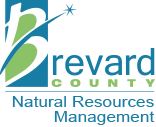Septic System Maintenance
![]()
These septic system tips can help to save you money, keep your drinking water pure and protect the lagoon.
Water runs out of your house through one main drainage pipe, into a septic tank, and then exits into the drainfield. That means not only your toilets, but your sinks, showers, washing machine, and dishwasher all drain into your septic system.
Septic systems are designed to reduce or eliminate most human health or environmental threats created by household wastewater. It’s the responsibility of the homeowner to maintain the septic system — and there are many benefits to doing so.
First, it can save you money. You can expect to spend roughly $250 to $500 every three to five years to maintain your septic system, compared to the $3,000 to $7,000 you’d pay to repair or replace a malfunctioning one.1 Additionally, it helps to protect your family’s health. A properly maintained septic system helps to keep your family’s drinking water pure — and reduces the risk of contaminating local waterways, such as the Indian River Lagoon (IRL).
Household wastewater often contains pollutants, such as nitrogen, phosphorus, and disease-causing bacteria and viruses, according to the U.S. Environmental Protection Agency (EPA).2
![]()
There are an estimated 53,204 septic systems in Brevard County within the Indian River Lagoon basin, which contribute about a quarter of the excess nitrogen pollution reaching the lagoon.3
When these materials make it to the lagoon, they can also have harmful effects on the ecosystem, killing native plants, fish and shellfish. A properly maintained septic system can aid in the removal of harmful bacteria, viruses and nutrients — safeguarding your wallet, your health and your lagoon.
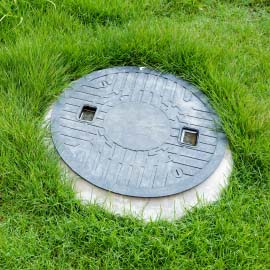
Ready to do your part? Follow these septic system maintenance tips.
![]()

LOCATE YOUR SEPTIC TANK AND DRAINFIELD IN YOUR YARD.
To maintain your septic system, you’ll first need to locate it. There are four main components of a septic system, including a pipe from the home, a septic tank, a drainfield, and the soil.
Follow these steps to locate your septic system:
- Find the “as-built” drawing of your home.
- Look in your yard for a bump in the grass, roughly 5 to 10 feet from your house. That’s your septic tank. Your drainfield will be an additional 10 feet away.
- Check your yard for plastic/cement access lids or a circular PVC cleanout pipe.
- Don’t see any lids or a cleanout pipe? It might be buried under grass. Instead, look for a plumbing vent on your roof — the septic tank should follow a straight line from the house starting at the approximate vent location.
Need help? You can always source an inspector or plumber to help you find the exact location of your septic system.

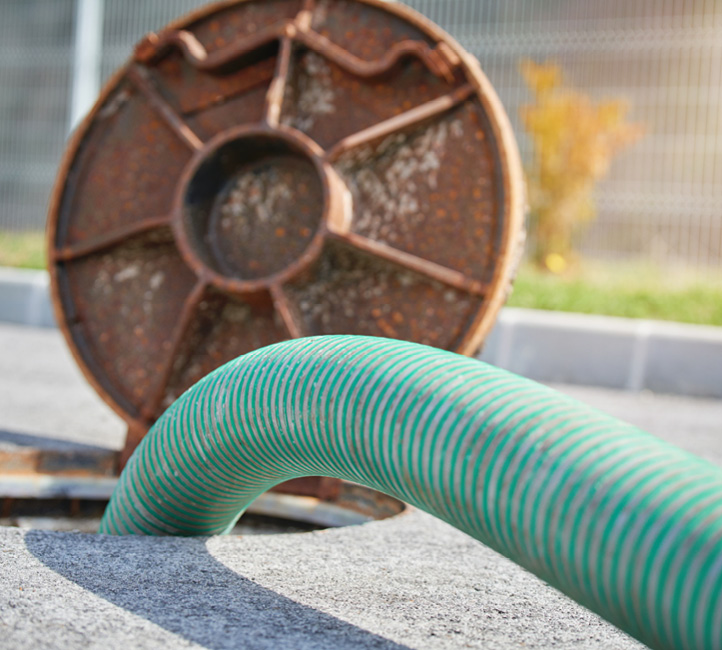
SCHEDULE A SEPTIC SYSTEM INSPECTION
EVERY THREE TO FIVE YEARS.
![]() Over time, sludge and floating scum need to be removed by pumping the septic tank. As a result, it’s important to have your septic tank inspected and pumped roughly every three to five years, to ensure everything is in working order.
Over time, sludge and floating scum need to be removed by pumping the septic tank. As a result, it’s important to have your septic tank inspected and pumped roughly every three to five years, to ensure everything is in working order.
A local licensed septic system service provider can give you a cost estimate to complete the septic system checkup and any necessary maintenance. They can also help you determine the best frequency to service and pump out your system.
It’s also important to keep an eye out for septic system problems, such as a crack or break.
![]() How can you tell if there is an issue? Here are some of the red flags:
How can you tell if there is an issue? Here are some of the red flags:
- Wastewater backing up or gurgling into your household drains
- A bad odor around the septic tank or drainfield
- Bright green, spongy grass on your drainfield
- Pooling water or muddy soil around your septic system
If you notice any of these signs, contact a professional plumber right away so they can inspect it and complete any necessary repairs.
By maintaining your septic system, it will serve your home well for years to come.
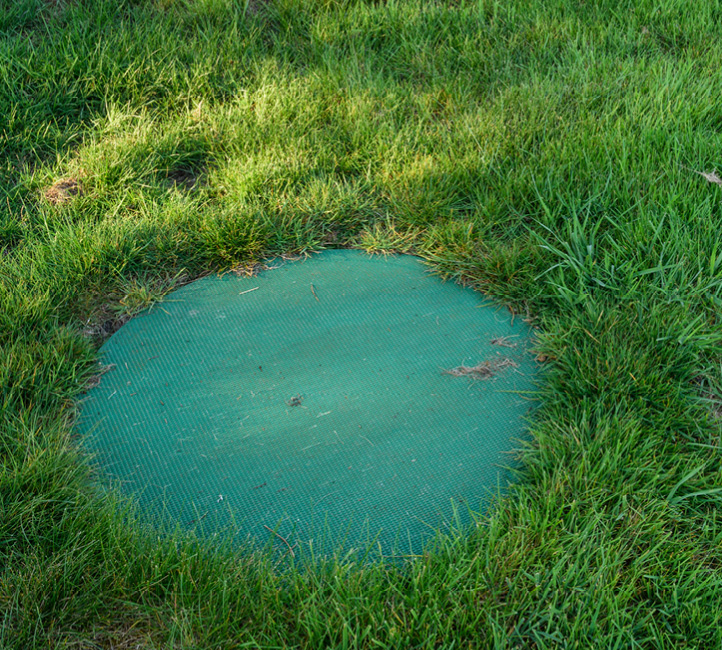
ADOPT DAILY HABITS THAT KEEP YOUR SEPTIC SYSTEM IN WORKING ORDER.
Your daily habits can influence how well your septic system works over time. These habits can help to increase the efficiency and lifespan of your septic system:
- Properly dispose of waste. Items such as floss, hygiene products, hair, diapers, or wipes should go in the trash — not the toilet. Flushing these items down the toilet can cause clogged pipes, which can lead to raw sewage overflowing in your home, yard, into groundwater, and the lagoon. (Gross, right?) It’s also important to think about what you put in the sink — keeping grease, fats, harmful chemicals, and hair out of the drain.
- Be mindful about your water usage. All of the water from your house runs from one main drainage pipe to your septic tank and then exits into the drainfield. If the drainfield gets overloaded with too much liquid, it can flood, causing sewage to flow to the surface and into the lagoon. It can also create unpleasant backups in your toilets and sinks. To avoid the mess, fix household leaks, run the dishwasher and washing machine only when they’re completely full, and consider installing high-efficiency fixtures.
- Keep your drainfield clear. Avoid planting trees or shrubs in your drainfield. The roots can clog the field and cause your septic system to fail. Additionally, don’t park or drive on your drainfield, which can crush the distribution pipes and cause the tank to overflow or backup.
These everyday actions will help to keep your household — and your septic system — running smoothly.
Be Septic Smart.
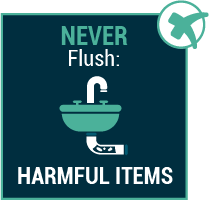
think at the sink
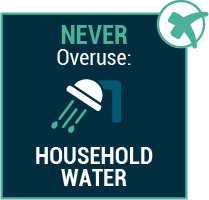
don't strain your drain

shield your field
Why This Matters to All of Us
Did you know that septic system maintenance can protect your investment in your home?
Malfunctioning septic systems can reduce your property value, hinder the sale of your home, and even pose a legal liability.
By maintaining your septic system, you’ll also be helping to keep the lagoon — and the greater community — beautiful. Not just for yourself, but for your children and grandchildren.
BECOME LAGOON LOYAL
Earn points for making lagoon-friendly choices, like scheduling a septic system checkup. Those points will add up to discounts at participating local businesses. Sign up to become Lagoon Loyal and get rewarded for helping the lagoon!
Let’s Be Clear…Septic System Maintenance FAQs
SOURCES:
1 “Why Maintain Your Septic System.” www.epa.gov, United States Environmental Protection Agency, https://www.epa.gov/septic/why-maintain-your-septic-system.
2 “A Homeowner’s Guide to Septic Systems.” www3.epa.gov, United States Environmental Protection Agency, https://www3.epa.gov/npdes/pubs/homeowner_guide_long.pdf.
3 “Save Our Indian River Lagoon Project Plan 2019 Update.” Prepared for Brevard County, March 2019, PDF File (Page 19).






